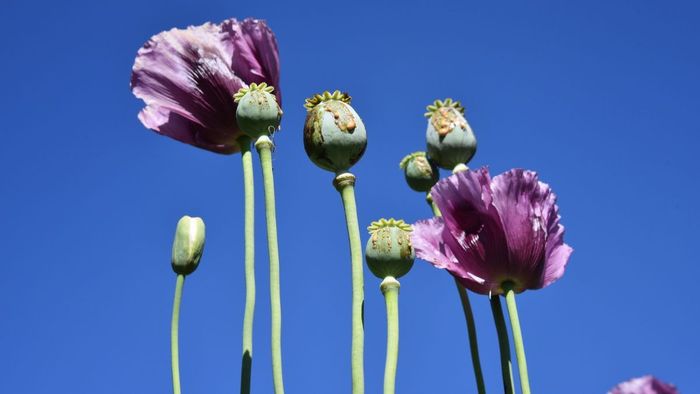Myanmar remains world’s leading source of opium and heroin: UN report
Myanmar continues to be a major source of global opium production, with cultivation levels remaining high despite a slight decrease in recent years, according to the United Nations Office on Drugs and Crime (UNODC) in its latest “Myanmar Opium Survey 2024.”

- Dec 13, 2024,
- Updated Dec 13, 2024, 9:20 PM IST
Myanmar continues to be a major source of global opium production, with cultivation levels remaining high despite a slight decrease in recent years, according to the United Nations Office on Drugs and Crime (UNODC) in its latest “Myanmar Opium Survey 2024.”
The survey, based on data collected during the third growing season since Myanmar’s military takeover, shows a modest 4% reduction in the area under opium poppy cultivation, from 47,100 hectares to 45,200 hectares, signaling some stabilization at these elevated levels.
However, regional disparities in cultivation levels and uncertainties surrounding the global opium market—particularly in relation to the drug ban in Afghanistan—suggest that Myanmar’s opium economy is at a pivotal point. Some areas saw increased cultivation, while others reported a decrease, indicating that despite the overall decline, the opium industry remains resilient.
“The amount of opium produced in Myanmar remains near historically high levels, posing significant risks as conflict persists within the country and global supply chains adjust to shifts in Afghanistan’s production,” said Masood Karimipour, UNODC Regional Representative. “Given the volatile situation, there is considerable risk of further expansion in Myanmar’s opium cultivation in the coming years.”
Shan State remains the dominant area for opium cultivation, accounting for 88% of Myanmar’s total production. While cultivation slightly decreased in North and South Shan, East Shan, which borders Laos and Thailand, saw a 10% increase. Conversely, Kachin State experienced a 10% decrease, while Chin State, near the India border, saw the largest rise in cultivation at 18%. Kayah State, which has lower levels of cultivation, also experienced an 8% increase.
Also Read: Myanmar records highest landmine casualties globally, children most affected
Several factors contribute to these fluctuations, including opium prices. The farmgate price of dry opium has dropped by 8%, to US$304 per kilogram, signaling early market saturation following years of growing production. Yet, a global shortage of opiates due to declining production in Afghanistan may push prices up, making opium cultivation more attractive to farmers in Myanmar.
The ongoing conflict and labor shortages—caused by the migration of people and recruitment by military and armed groups—have also complicated efforts to curb opium production. Farmers have limited access to remote fields, further entrenching the challenge.
UNODC Representative Karimipour emphasized the increasing threat of synthetic drug production in the region, along with a rising illicit economy tied to online gambling and scam centers. He stressed the need for urgent action to prevent the situation from worsening.
The report highlights the deep socioeconomic ties between opium cultivation and the broader economic challenges in Myanmar. Villages involved in poppy farming face severe poverty, limited public services, high debt levels, and political instability, making opium cultivation a critical source of income for many.
“Farmers growing opium are not getting rich—they are simply struggling to survive and provide for their families under extremely difficult conditions,” said Yatta Dakowah, UNODC Country Manager for Myanmar. “There is still a window of opportunity to shift these communities away from opium cultivation by supporting sustainable economic alternatives. However, this opportunity is rapidly diminishing.”
The UNODC stresses that decisive action is needed to address the root causes of opium cultivation and provide long-term solutions to prevent further expansion of the illicit opium economy in Myanmar.